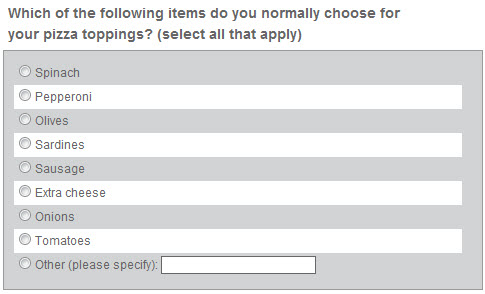Earlier this week, I outlined four types of survey questions, one of which is nominal data. There is nothing marginal about nominal data. In fact the majority of survey questions are nominal in nature. That is they are categories with numbers assigned to them to facilitate analysis. In most research courses they are introduced as variables such as eye or hair color, a person’s name or the state they live in. In consumer or B2B marketing research they would include, for example, the name of the store you purchased your DVD player at or the industry your customers are involved in. Let’s look at a few question types useful for collecting nominal data.
Most nominal data is collected via questions that provide the respondent a list of items to choose from, for example:
 Demographic Survey Example
Demographic Survey Example Demographic Survey Example
Demographic Survey Example Consumer Questionnaire Example
Consumer Questionnaire Example
 Demographic Survey Example
Demographic Survey Example Demographic Survey Example
Demographic Survey Example Consumer Questionnaire Example
Consumer Questionnaire Example
